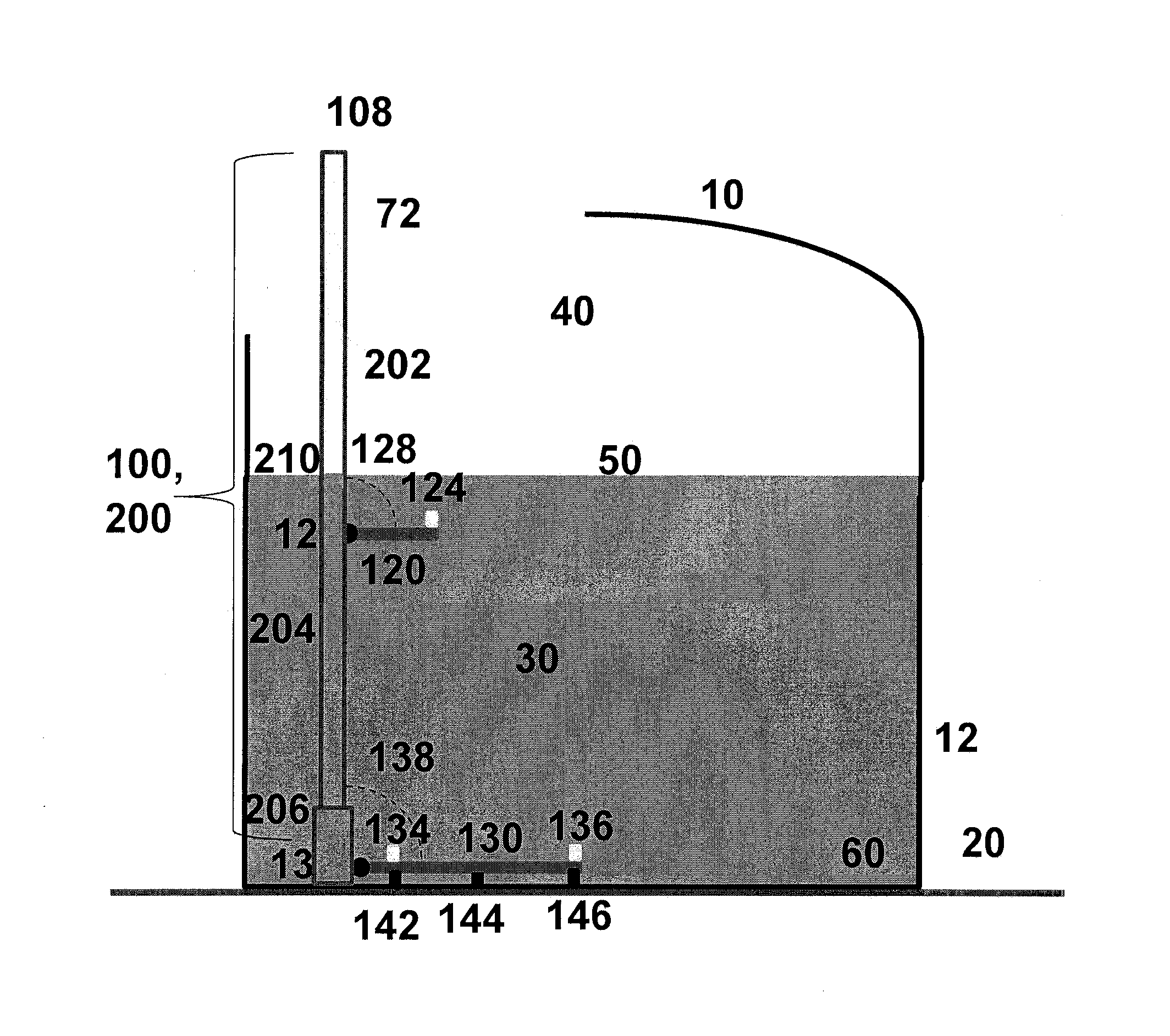Method for Extending the Time Between Out-of-Service, In-Tank Inspections Using Ultrasonic Sensor
a technology of ultrasonic sensor and storage tank, which is applied in the direction of instruments, using mechanical means, and fluid detection at leakage points, etc., can solve the problems of difficult estimation, less than optimal maintenance and repair, and high cost of out-of-service inspection, so as to safe prolong the time between out-of-service inspections. , the effect of safe prolonging the time between out-of-service inspections
- Summary
- Abstract
- Description
- Claims
- Application Information
AI Technical Summary
Benefits of technology
Problems solved by technology
Method used
Image
Examples
Embodiment Construction
[0053]The method and apparatuses of the present invention can be used to provide critical data and information about the structural integrity of an aboveground or bulk underground storage tank needed to better prioritize and better schedule out-of-service tank inspections for these tanks, because it can be used to assess the condition of the tank floor, i.e., the thickness of the tank floor, the rate of corrosion of the floor, and whether or not any holes or cracks exist in the floor. If the floor is in good condition, then it is possible to postpone a scheduled inspection or to extend the time between inspections so that the maintenance and repair activities can focus on those tanks with the most need.
[0054]The method is comprised of a leak detection test and one or more actual measurements of the thickness and corrosion condition of the bottom floor of the tank in a least one section of the tank. This approach will work well for tanks in which the corrosion is either small or rela...
PUM
| Property | Measurement | Unit |
|---|---|---|
| time | aaaaa | aaaaa |
| time | aaaaa | aaaaa |
| diameters | aaaaa | aaaaa |
Abstract
Description
Claims
Application Information
 Login to View More
Login to View More - R&D
- Intellectual Property
- Life Sciences
- Materials
- Tech Scout
- Unparalleled Data Quality
- Higher Quality Content
- 60% Fewer Hallucinations
Browse by: Latest US Patents, China's latest patents, Technical Efficacy Thesaurus, Application Domain, Technology Topic, Popular Technical Reports.
© 2025 PatSnap. All rights reserved.Legal|Privacy policy|Modern Slavery Act Transparency Statement|Sitemap|About US| Contact US: help@patsnap.com



